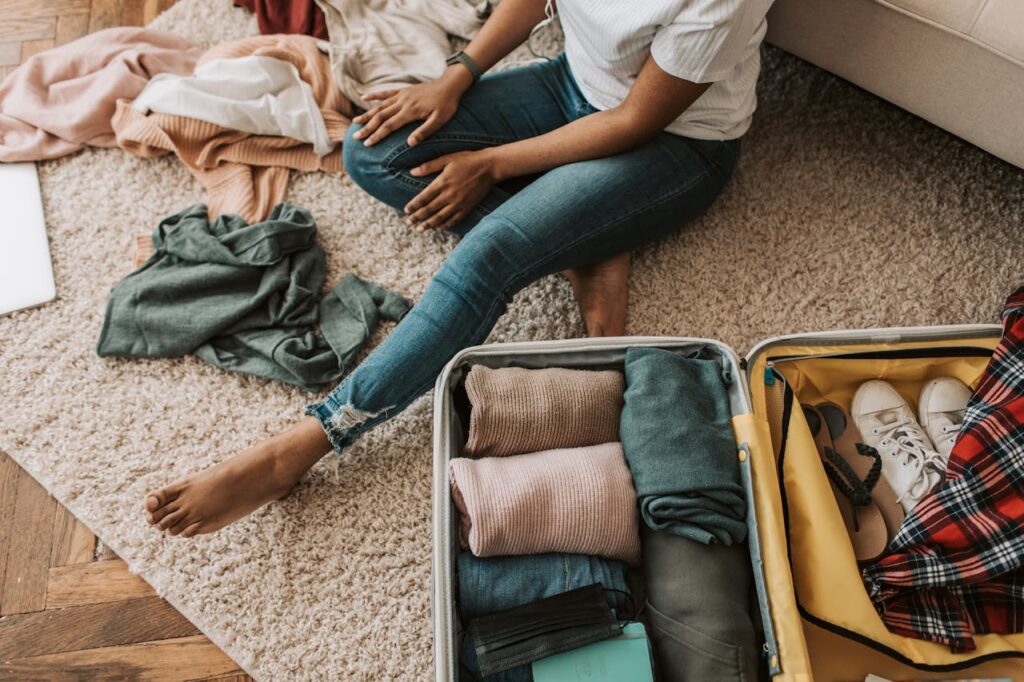Packing for a two-week trip can be a challenging task, especially when attempting to use only a medium-sized suitcase while staying within airline weight limits. It is important to select a bag that is roomy enough to hold all essentials yet small enough to avoid hefty baggage fees. To maximize space and minimize weight, strategic organization and careful selection of items are key. By adhering to weight and security regulations, you can ensure a smoother check-in process at the airport.

Making the most of a medium suitcase involves being selective about what to take. Choosing versatile clothing that can be mixed and matched is one step towards packing efficiently. To keep everything organized, use packing cubes or compression bags which also help to reduce the volume of clothing. Always keep in mind the weight restrictions imposed by airlines, and consider using a luggage scale to avoid unforeseen charges at the airport. For convenience and style, consider the option to buy a medium suitcase that fits the standard airline measurements for a check-in bag.
Key Takeaways
- Efficient packing requires a mix of selectivity and strategic organization.
- The use of space-saving accessories like compression bags can reduce clothing volume.
- Compliance with airline regulations prevents last-minute fees and facilitates travel.
Packing Strategy and Organization
Packing a medium-sized suitcase for a two-week trip requires a balance of versatility and restraint. By choosing a suitable suitcase, utilizing packing cubes, and adopting a capsule wardrobe, your packing will be both strategic and efficient.
Choosing the Right Suitcase
Your choice of suitcase is paramount in starting your journey correctly. Opt for a medium-sized, lightweight option with multiple compartments to help distribute weight evenly and to keep items organized. Ensure it is robust yet flexible enough to handle the rolling or folding of clothing.
Compartmentalizing with Packing Cubes
Packing cubes are your best friend when it comes to organization. Separate your apparel by category using packing cubes: one for underwear, one for socks, one for tops, and so on. This system not only keeps your suitcase tidy but also compresses your clothes, allowing for more space.
Creating a Capsule Wardrobe
Embrace the concept of a capsule wardrobe which consists of a limited variety of interchangeable clothing items designed to maximize the number of outfits you can create. Opt for layers like linen shirts and wool sweaters that cater to different weather conditions and activities, and prioritize neutral colors for maximum variety.
Listing and Selecting Essentials
Start with a comprehensive packing list. Detail everything from clothing to toiletries, accessories, and shoes. This helps to avoid overpacking and ensures important items like a laundry bag or a hat for sun protection are not overlooked.
Strategic Packing Techniques
When it comes to packing, both roll and fold methods have their place. Roll softer garments and fold stiffer ones like denim to save space and minimize wrinkles. Shoes should be packed around the perimeter, while a collapsible bathing suit and flip-flops can fit into gaps. Heavy items, like shoes, go at the bottom near the wheels; lighter items like dresses and sandals atop. Always think about the climate of your destination and the activities planned to keep your suitcase on point and within weight limits.
Dealing with Weight and Security Regulations
Travel efficiently by understanding the specifics of airline weight limits and security regulations. Strategically packing your suitcase can help avoid extra fees and ensure a smooth airport experience.
Understanding Airline Weight Limits
Airlines enforce weight limits for both carry-on luggage and checked baggage. Typically, carry-on should not exceed 22 pounds and checked luggage ranges from 50 to 70 pounds. It’s key to know your airline’s specific limitations to avoid penalties.
Packing To Avoid Extra Fees
To avert additional fees, prioritize items based on necessity and weight. Consider the following bullet points:
- Focus on packing versatile clothing that can mix and match, reducing the total number of items.
- Opt for travel-sized toiletries to save space and weight.
- Use space efficiently: roll clothes to prevent wrinkles and consider compression bags for bulky items.
Selecting Carry-on vs. Checked Luggage
Carry-on is ideal for short trips or essentials, while checked baggage suits longer stays or larger items. A hard-sided suitcase offers better protection for fragile souvenirs but consider a softer bag for flexibility.
Preparing for Security Checks
At security checks, liquids must be in containers of 3.4 ounces or less and placed in a clear, quart-sized bag. Electronics larger than a smartphone should be easily accessible. Prepare by wearing shoes that are easy to remove and avoid jewelry or belts with metal that could trigger alarms.
Conclusion
Packing a medium-sized suitcase for a two-week trip requires careful selection and organization. Maximize space by rolling clothes and using packing cubes, and prioritize versatility by choosing items that can be mixed and matched. Always check airline restrictions to ensure your luggage meets weight requirements. With these tips, your travel experience can be both enjoyable and hassle-free.

